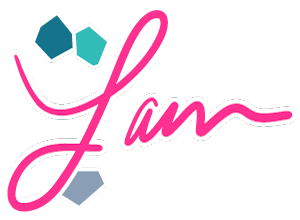The consistent use of color as part of your identity has been known to increase brand recognition by as much as 80%. That fact alone makes using color worthwhile, but there are some key details to keep in mind while choosing a color palette for your brand.

Color has the distinct ability to inspire emotion even though it is a purely visual medium. Your audience can’t hear, taste, touch or smell color — but what they see has the power to completely change the way they feel about your brand. In fact, according to Kissmetrics, 92.6% of people say the visual dimension is the #1 influencing factor affecting their purchase decision (over taste, smell, etc.).

When creating new logos, brands, marketing materials, websites and more — color exploration is a big part of the process that you typically don’t see while working with a designer. Depending on goals of our project, I may test hundreds of color combinations looking for exactly the right palette to represent and inspire all that your brand needs to say.

To understand why color really matters, you need to know which emotions each color fuels. All colors have positive and negative connotations, and its you or your designers job to ensure that its use and context reflect your brand in a way that supports your marketing strategy.

Cool colors
Cool colors can have a relaxing or calming effect for your audience. But, they can also feel cold or impersonal. Find balance in your palette by including complimentary warm colors as well.
Blue
Blue is often associated with depth and stability. It symbolizes trust, loyalty, wisdom, confidence, intelligence, faith, truth and heaven.
Green
Green is the color of nature. It symbolizes growth, harmony, freshness and fertility. Green has strong emotional correspondence with safety and is often associated with money.
Purple
Purple combines the stability of blue and the energy of red. It’s associated with royalty and symbolizes power, nobility, luxury and ambition. It conveys wealth and extravagance. Purple is associated with wisdom, dignity, independence, creativity, mystery and magic.
You might also use:
- Turquoise
- Silver

Warm colors
Warm colors are often very stimulating and attention grabbing, but can also appear alarming. In recent usage, bold reds often signal concern or a negative action, especially in web design and user interface, so it’s in your best interests to keep that in mind when choosing how you will use these tones. Warm colors are also known for inspiring anger, so balancing your palette with cool colors is typically helpful to your overall strategy.
Red
Red is the color of fire and blood. It’s associated with energy, war, danger, strength, power and determination as well as passion, desire and love.
Yellow
Yellow is the color of sunshine. It’s associated with joy, happiness, intellect and energy. Yellow produces a warming effect, arouses cheerfulness, stimulates mental activity and generates energy.
Orange
Orange combines the energy of red and the happiness of yellow. It is associated with joy, sunshine, and the tropics. Orange represents enthusiasm, fascination, happiness, creativity, determination, attraction, success, encouragement and stimulation.
You might also use:
- Pink
- Gold

Neutral colors
Neutral colors are exactly that — neutral. As a whole, they tend to be less polarizing than warm or cool colors. However, each swatch can still inspire positive and negative connotations of its own. Neutral colors can provide beautiful “foundations” on which to build your brand when you use them in backgrounds and large areas with layers of additional color.
Brown
Brown is a natural, earthy neutral. It is related to earth, wood and stone. It’s warm in nature but can be a soft compliment to cool colors.
Beige
Beige is a neutral color with a bit of the warmth of brown and the crisp, coolness of white. It often creates a calm, neutral background and foundation for other colors.
Black
Black can be serious and conventional. The color implies mysterious, sexy and sophisticated.
White
White represents purity, cleanliness and innocence. Like black, white goes well with almost any color.
Gray
Gray is a neutral, balanced color. It is a cool, conservative color that seldom evokes strong emotion although it can be seen as a cloudy or moody color.
Explore sites like Pinterest or use tools like Adobe Color to browse swatches and find color inspiration. Often, you can find a fantastic palette that works perfectly for your brand with just a few tweaks.
Follow MARKETMOX’s board Color on Pinterest.
Don’t forget that the process of building your palette should include looking at your business and marketing strategy from a holistic perspective. Consider the answers to these questions to get you started:
- Who is your target audience?
- How will your audience respond to these colors?
- Do these colors reflect how you want your audience to feel about your brand?
- What colors are trendy among your competitors? Does your palette stand out?
- What colors are trendy among your audience? Does this appeal to them?
- Is there balance, dimension and room for creativity in your palette?
The real benefit of working with a designer is that all of these elements are considered for you behind the scenes. What you receive are 2-3 exceptionally well thought out palettes that will help to build and grow your brand among your target audience — saving you tons of time and effort in refining this subtle yet important detail.
Need help choosing a color palette and giving your brand a face lift? Contact us today for a consultation or to get started on a new project!




Leave a Reply